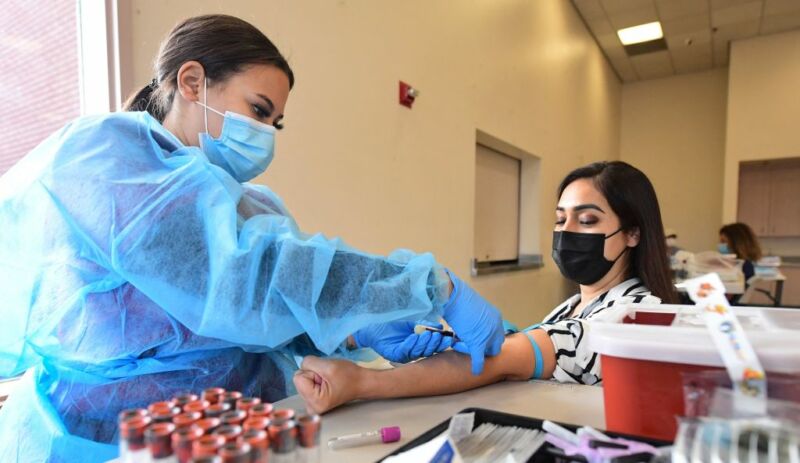
We've tended to treat the RNA-based vaccines from Moderna and Pfizer/BioNTech as functionally equivalent. They take an identical approach to producing immunity and have a very similar set of ingredients. Clinical trial data suggested they had very similar efficacy—both in the area of 95 percent.
So it was a bit of a surprise to have a paper released yesterday indicating that the two produce an antibody response that's easy to distinguish, with Moderna inducing antibody levels that were more than double that seen among people who received the Pfizer/BioNTech shot. While it's important not to infer too much from a single study, this one was large enough that the results are likely to be reliable. If so, the results serve as a caution that we might not want to base too many of our expectations on relatively crude measures of antibody levels.
The new study
The work itself was remarkably simple. A Belgian medical center was vaccinating its staff and asked for volunteers willing to give blood samples. Samples were taken both prior to vaccination and six to 10 weeks after, with the levels of antibody specific to the SARS-CoV-2 spike protein tested at both points. About 700 participants received the Moderna vaccine, while roughly 950 took the one from Pfizer/BioNTech.
With the data in hand, the researchers simply compared the levels of antispike antibodies in the different groups. One thing this revealed is that those who had been infected prior to the vaccination developed a much higher response than the other participants, with over five times the amount of antibodies following vaccination.
But the notable surprise was that the Moderna vaccine generated a stronger response than the Pfizer/BioNTech version. In terms of units of antibody per millilitres of blood sample, the difference was 3,836 to 1,444, with confidence intervals that didn't come close to overlapping. In other words, it's a statistically significant difference in a sufficiently large sample that it's unlikely to be by chance.
That said, there are a couple of caveats. One is that, while the medical center was likely able to store and administer the vaccines appropriately, they were at the end of a complicated production and distribution network, and there is a chance that something happened to one of the vaccines before it made it to the clinic. A simple replication would sort this out quickly.
What to make of it?
The other important caveat is that the researchers behind the study simply measured the total levels of antibody that stuck to the spike protein. Only a subset of these will be what are termed neutralizing antibodies, which stick to spikes in a way that interferes with the protein's ability to interact with cells and insert the virus' genome. Measuring neutralizing antibodies is much more difficult, so most studies do what this one has.
But it's technically possible that, despite the differences in total antibodies, both vaccines generated similar levels of neutralizing antibodies—something else an additional study could sort out. This would be consistent with the vaccines' generally similar levels of protection, as protection seems to correlate with neutralizing antibody levels.
While we wait for data to help sort this out, it's worth considering whether we might be placing a little too much emphasis on antibody levels in our decision-making. Right now, arguments about the need for boosters are based in part on the fact that antibody levels drop over time, even though that's a normal consequences of the shift away from a response to an active infection and toward a functional immune memory of that infection. And the efficacy of a booster is being based in part on the fact that it restores high levels of antibody—even though that's exactly what should happen when the immune memory cells are activated by re-exposure to the spike protein.
As with these new results, these results should be approached with caution, since we don't fully understand how these changes in antibody level correlate with protection.
JAMA, 2021. DOI: 10.1001/jama.2021.15125 (About DOIs).
Article From & Read More ( RNA vaccines seem to produce very different antibody levels - Ars Technica )https://ift.tt/3kGI8th
Business
Bagikan Berita Ini














0 Response to "RNA vaccines seem to produce very different antibody levels - Ars Technica"
Post a Comment